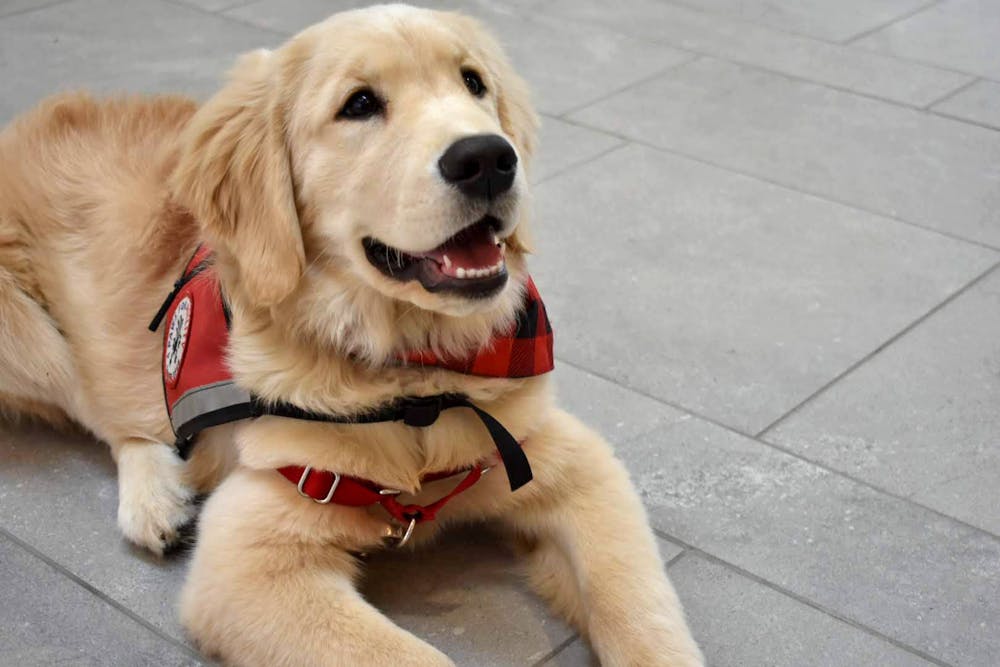A black German retriever trots up the steps of McGuffey Hall, gathering stares from other students sharing the path. Although most either ignore or smile at the dog, one student shrinks into a corner and turns their head away from her path — afraid. Two others rush to the next corner, embracing each other as one begins to cry.
Allie Humenay, vice president of Paws for a Cause Miami (PFCM), follows closely behind to assure that her foster dog maintains her concentration and ignores the negative reactions to her presence.
Humenay has been a member of PFCM for years. The organization allows volunteers to train service dogs at a basic level. Almost 70 handlers are entrusted to teach these dogs socialization and listening skills before they advance to specialized training programs or fail to graduate.
Humenay says reactions like these are atypical at Miami University.
“When training in public, I usually get positive reactions from students and faculty,” Humenay wrote in an email to The Miami Student. “I walk down the sidewalk and just see people smiling as I walk by them.”
Humenay emphasized that her dogs rarely experience hostility from fellow students, and most faculty have been patient with the animals. Even so, PFCM fosters sometimes face issues around campus. One common issue for trainers is inappropriate petting or interactions with the service dogs-in-training.
“You will get those random people who will reach their hands down and pet the dog as you walk by, but the majority of people know you have to ask first,” Humenay wrote.
Nathan Phillips, secretary of PFCM, described similar experiences.
“Most of the time the [negative interactions] I get happen with non-students,” he said. “An older man accused me of having a fake service dog … There are ‘drive-by’ pats at [hockey] games, and people give [the dog] popcorn … I had one person rationalize it as, ‘I do this for my dog at home.’”
Phillips emphasized that not only does inappropriate contact with a service dog interrupt the animal’s training, but it also impedes the handler’s ability to control the dog.
“Due to [inappropriate touching], sometimes dogs will break their commands, and we have to make them understand they’re still working,” he said. “We have to get [the dog] to understand the difference between being pet by a normal person and by a handler as a signal.”
Humenay emphasized the need for dogs to become comfortable around crowds of humans while forming positive associations with their community.
Enjoy what you're reading?
Signup for our newsletter
“The entire socialization process is about giving as many positive experiences to the dog as possible so that he or she is confident,” she wrote. “So, when the dog is in a negative situation, they become less confident and it becomes more of a struggle to get them over that hump.”
Although both handlers emphasized that they wanted people to be considerate of the dogs’ training process, they also clarified that there are acceptable ways for the public to interact with the service animals-in-training.
“Even though our dogs in Paws for a Cause are in training, it is important to treat that dog like it is working to help it practice [to ignore] distractions,” Humenay wrote. “You may ask to pet our dogs to help them get used to different kinds of people.”
“If you’re ever unsure if you should approach the [service dog-in-training], ask the handlers and keep their opinions in mind,” Phillips said. “They know a lot about service dogs. Don’t assume that you know what’s right. Just ask.”




